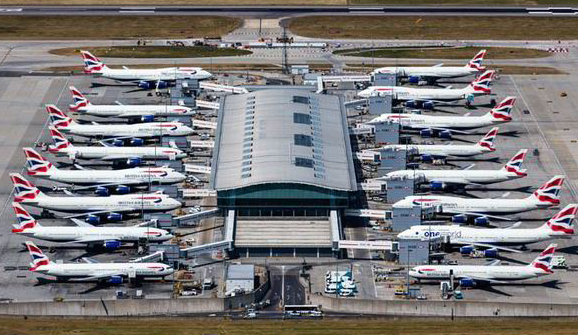The Government is struggling to reach a view on the recommendation of the Airports Commission that another runway be built at Heathrow. Both the main political parties are divided on this issue. Local MPs are generally against, as are the candidates in the 2016 election for Mayor, on account of environmental impacts.
The Airports Commission forecasts a doubling of passenger numbers by 2050, hence the need for new runway capacity. I have argued previously that there is much more downside uncertainty in this forecast than the Commission believes, in part because the market for air travel may be more mature than generally supposed.
Quite apart from forecasting questions, there are reasons to suppose that we could cope quite well without a further runway in the southeast England, whether at Heathrow or elsewhere. To start with an argument by analogy.
Road capacity constraint
In the 1970s London decided not to enlarge the road network to accommodate growing car ownership. The retained historic street pattern has constrained car use such that car traffic has not increased over the past 20 years, a period of population and income growth. So the share of journeys by car has fallen, while investment in public transport, rail in particular, has met the mobility needs of inhabitants and visitors. London has thrived economically, culturally and socially despite a major transport capacity constraint – the road system. We have worked around this by investment in rail that provides speedier and more reliable travel than the car on congested urban roads.
Airport capacity constraint
If we did not construct another runway, how would we cope? What would be the workaround? For air travel this lies within the system. Three–quarters of passengers are on leisure trips. Even at Heathrow, 70% of passengers are tourists or visiting family and friends. Yet the arguments for more runway capacity are very largely about the need to allow for the growth of business travel – to help British businesses develop new markets and to foster inward investment into the UK.
The case for more airport capacity to support tourism is weak. While London’s hospitality, entertainment and retail sectors would welcome more inbound visitors, Britain has a negative balance of trade in tourism, the British abroad spending a lot more each year than overseas visitors to the UK. Moreover, London, the inevitable destination of first time visitors, is essentially a working city where excessive numbers of tourists arguably detract from the quality of life. Promotion of inbound tourism might better focus on places outside the capital, accessible from regional airports.
Market response
If we decided not to construct a further runway at Heathrow, the market would respond to this capacity constraint. Business travellers would command priority since they would be willing to pay for the convenience, connections and direct flights at Heathrow. Growth of business travel would displace leisure travel, both within aircraft on existing routes and between routes, where there are trade-offs of time against money. For instance, if I need to travel to India on a business trip for which others are paying, then if possible I would fly direct from Heathrow. But if I am on a holiday visit, paying out of my own pocket, than I may choose the cheaper alternative via a Middle East hub, the inconvenience of the change of aircraft being acceptable for the more attractive price.
At present, both routes to India start from Heathrow. If business travel grew, the airlines would serve the routes with larger aircraft. If demand grew yet further, then alternative departure points for leisure travellers would be offered, such as Stansted, which has plenty of spare capacity.
Growth of business travel in conditions of capacity constraint would be profitable for both the airlines and Heathrow airport. If profits were judged excessive, there are regulatory interventions that could be considered to prevent users from being exploited.
Assessment
There is a case for an additional runway in southeast England, as argued by the Airports Commission. But if it proves too difficult to agree where to build it (and how to finance it, given the uncertainty of forecast usage), then we could manage without. The market would give priority to business travellers. Leisure travellers are more flexible and would take advantage of alternative routes that the airlines would offer.
A version of this article appeared in The Conversation on 11 December 2005


[…] travel by displacing leisure travel to other airports in the London area with spare capacity. In a blog posted in 2015 I suggested that Emirates Airline might fly from Stansted to its Dubai hub if demand […]